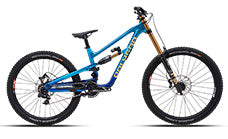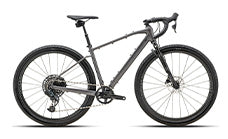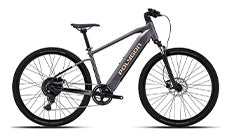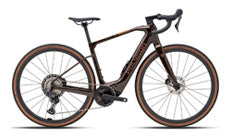Shimano vs SRAM: A Comprehensive Comparison of Mountain Biking Drivetrains

For any mountain biking enthusiast, selecting the right drivetrain is paramount to maximizing performance, reliability, and overall enjoyment of the sport. The ongoing debate between Shimano and SRAM, the two leading brands in the mountain biking drivetrain market, is one of the hottest topics in the community. Each brand brings its own unique philosophy, technology, and product lineup. Whether you are an entry-level rider or a seasoned pro, understanding the offerings and strengths of both Shimano and SRAM will help you make an informed decision. This comprehensive comparison explores the histories, product line-ups, and head-to-head comparisons of these two giants to help you determine which drivetrain might be right for you.
Shimano and SRAM
Shimano and SRAM have both played pivotal roles in advancing mountain bike technology, but their origins and philosophies are distinct. Shimano, a Japanese company established in 1921, has earned a reputation for its methodical and reliable engineering. It first ventured into the mountain biking market in the 1980s with its pioneering Deore XT groupset. Since then, Shimano has become synonymous with high-quality and dependable components.
In contrast, SRAM, a younger player founded in 1987 in the United States, quickly made a name for itself with innovative products like grip shifts, challenging traditional designs. This inclination toward innovation has remained a hallmark of SRAM’s approach, consistently pushing the boundaries of what’s possible in mountain biking technology.
Shimano Drivetrain Overview
Shimano's drivetrain offerings are categorized by groupset level, catering to different riding styles and budgets. Starting with the entry-level groups, Shimano targets recreational riders with a focus on longevity, ease of use, and everyday practicality. The Deore groupset represents Shimano's first true mountain bike-specific group and is highly popular among enthusiasts. It features advanced technologies such as Hyperglide Plus machining, which ensures smooth and rapid shifting.
Moving up, the SLX groupset builds upon the Deore's features but introduces lighter aluminum components, enhancing performance without significantly increasing cost. For more experienced riders, Shimano's XT groupset offers the optimal balance between advanced features and performance, including multi-release technology that enables quicker shifts.
At the pinnacle of Shimano’s offerings is the XTR groupset. Utilizing high-end materials, it is engineered to be extremely lightweight and efficient while providing unparalleled performance. However, this comes at a considerably higher price point, making it more suitable for serious competitors and professional riders.
SRAM Drivetrain Overview
Much like Shimano, SRAM’s drivetrain line-up is tiered to address different needs and budgets, starting with the SX groupset. This entry-level 12-speed option is known for its affordability and features like a cage lock button, which simplifies maintenance tasks.
The NX groupset shares many of the same fundamental features but uses improved materials for better reliability and performance. The GX groupset is widely celebrated for offering excellent performance and reliability at a reasonable price, making it a go-to choice for enthusiasts.
At the high end, SRAM's XO and XX groupsets stand out as they incorporate wireless electronic shifting systems. By eliminating traditional derailleur hangers, these groupsets offer advanced performance, reliability, and customization options. However, this cutting-edge technology comes with its own set of challenges, such as weight and the need for battery management, underscoring the premium nature of these top-tier offerings.
Entry-Level Comparisons: Shimano vs SRAM
When comparing the entry-level offerings of Shimano and SRAM, Shimano tends to hold the upper hand in terms of smooth shifting and overall reliability. Shimano’s entry-level drivetrains offer a balanced blend of performance and dependability that make them a popular choice for new riders.
However, SRAM’s SX groupset brings innovation to the table with features like the cage lock button, which can make certain maintenance tasks easier. It also introduces riders to the benefits of a 12-speed system at a more accessible price point, making SRAM a compelling option for those who prioritize ease of use and future-proofing their setup.
Mid-Range Drivetrain Face-Off
In the mid-range category, Shimano’s SLX goes head-to-head with SRAM’s GX. Performance and reliability are much closer in this segment, making user preference a significant factor. Shimano’s SLX groupset leverages advanced technology from its higher-tier siblings, bringing features like Hyperglide Plus and multi-release shifting into a more accessible price range.
Conversely, SRAM’s GX groupset excels in offering robust, high-performing features that appeal to serious enthusiasts. GX incorporates several of SRAM's innovative technologies and is known for its consistent and precise shifting, making it a strong competitor against Shimano's offerings.
High-End Drivetrain Showdown
The high-end category brings some of the most advanced and high-performing components available: Shimano’s XT and XTR and SRAM’s XO and XX. Shimano emphasizes weight savings and mechanical performance, while SRAM focuses on cutting-edge electronic technology.
Shimano’s XT and XTR groupsets are celebrated for their lightweight construction and impressive efficiency, perfect for competitive riders. Conversely, SRAM’s XO and XX groupsets embrace the latest in electronic shifting technology, offering unparalleled customization and smooth shifts for those who prioritize innovation.
Final Thoughts: Which Drivetrain is Right for You?
In the showdown between Shimano and SRAM, the best choice depends on individual riding styles, preferences, and priorities. Shimano offers a robust, dependable option from entry-level to high-end components, ideal for those who value reliability and smooth shifting. SRAM, with its innovative, high-tech approach, is perfect for riders seeking advanced features and the latest technologies.
By understanding the unique strengths and offerings of each, you can make an informed decision and select the drivetrain that will best enhance your riding adventures. Whether it’s Shimano’s methodical engineering or SRAM’s pioneering innovations, both brands offer excellent choices that cater to different facets of mountain biking.












































































